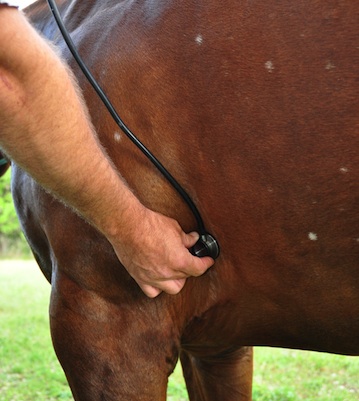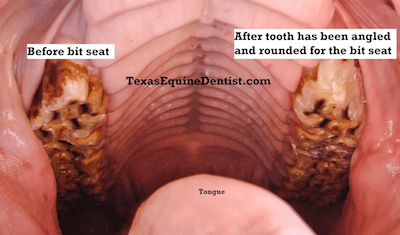Equine Dental Procedures

Dr. Warren starts with a general health exam.
Equine dental procedures are performed with two goals in mind: first, to create a dental environment that allows for optimum effectiveness in chewing, nutrition, and performance; and second, to maintain that environment by preventing problems in the future.
Prevention is accomplished through regular dental exams and care, as illustrated in Dr. Warren’s step-by-step equine dental photo demonstration. While preventive care is recommended for all horses, different procedures may be recommended depending upon the animal’s age and function. Dr. Warren treats each patient as an individual, tailoring treatment to preventing equine dental disorders at every age and in every type of horse.
Understanding Equine Dental Procedures
Equine dentists commonly perform various procedures, but horse owners may be confused as to the definition and need for such care. Some common procedures include:
- Floating—The removal or smoothing of sharp points on the outer edge on upper cheek teeth and inner edge on lower cheek teeth.
- Equilibration—The removal of overgrown areas of the cheek teeth, allowing all of the teeth to touch when and how they are supposed to and making mastication smoother and more efficient.
- Correction of malocclusions - horses can have incisor and/or cheek teeth malocclusions, meaning poor contact between teeth. This may interfere with grasping or chewing food. In addition, it can cause behavioral problems and interfere with performance. Long-standing malocclusions may also result in premature loss of teeth.
Bit seats—An important component of the dental procedure for performance horses. Bit seats describes the process of angling and rounding the profile of both the upper and lower first cheek teeth in order to minimize bit contact with the teeth.

Before and after bit seat
Horses that chew the bit, or experience the bit coming into contact with the teeth, will benefit from bit seats. Bit seats give the rider better control by eliminating or minimizing the distraction created when the bit contacts the teeth.
Bit seats also reduce the amount of cheek and tongue that gets pinched into the teeth by the bit. Rounding the cheek teeth gives the soft tissues a little extra room when the bit is applied, reducing this compressive effect. This helps prevent pressure on the tongue from the bit so the bit can rest on the bit seats rather than sliding down and onto the tongue.
- Canine tooth reduction—This is the process in which the canine teeth are rasped and contoured, essentially shortening them. Not all horses benefit from this procedure, so Dr. Warren evaluates each patient to determine if this is necessary and productive.
Other concerns that require dental intervention may include:
- Transverse ridges—Ridges on the surface of the teeth that are too tall or have a sharp point at the top. These ridges interfere with chewing by restricting front-to-back jaw motion.
- Wolf teeth—Small, vestigial teeth that are found just in front of the upper first cheek teeth. These wolf teeth are not functional for grinding and are usually removed, because they often cause pain when the horse is ridden with a bit.
Learn about other common dental problems in horses.
